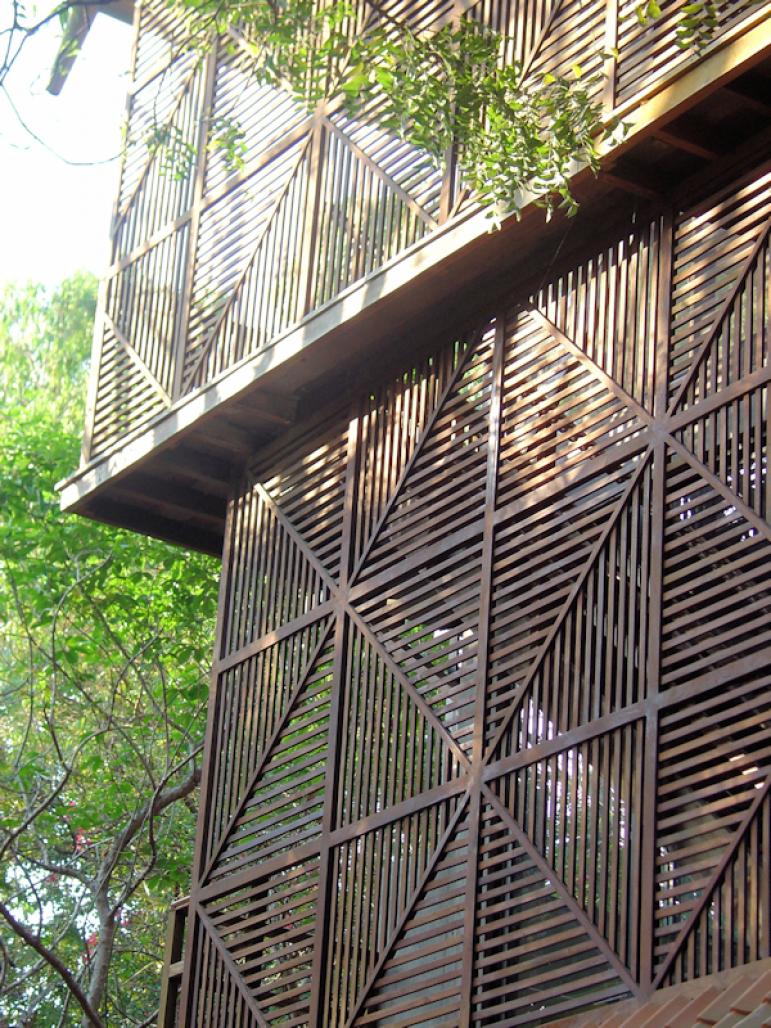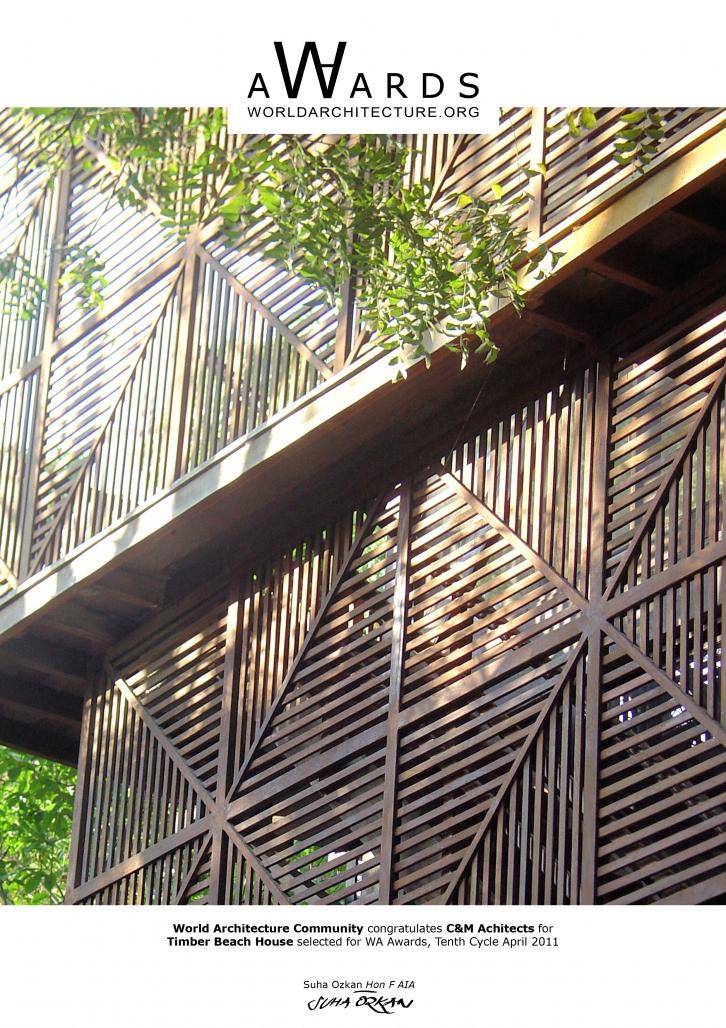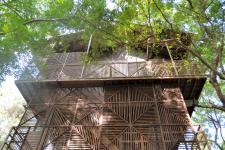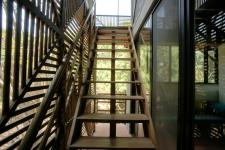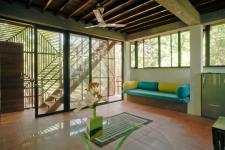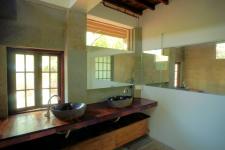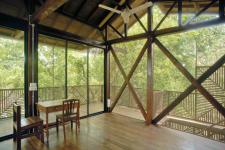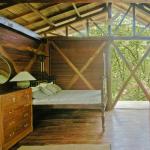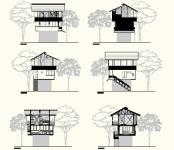The Tsunami in December 2004 wrecked havoc on the houses along the eastern coast. Ensuing this, a safe shelter was a prime concern in the region. Trying to cater to this need and its proximity to the sea; the CRZ(Coastal zone regulation) restrictions, C&M Architects came up with a solution that addressed these aspects. A structure in wood on 3 levels was designed and integrated with the local climate and conditions. This house, just off the scenic east coast road leading from Chennai to Pondicherry, is tucked away in a sylvan surrounding a stroll away from the sea. Daniel, the client, desired a house which blended with the surrounding landscape. And indeed, to live in this house is akin to living symbiotically with the trees around it!
This self-contained residence, designed for a single user, has a footprint of only 30 sq.m. on each floor. Even though the residence covers a small area, the spaces lend a cosy feel in a forest like setting. The approach to treating the spaces is minimalistic, though comfort and convenience have not been compromised on.
The core concept of this design was to fuse the outside environment with the interior setting. Given the location on the sea shore and the high humidity, the material options were limited to wood and aluminium were chosen since they are light, corrosion resistant, and easy to dismantle. The wood structure is treated against termites that are abundant in the area as well as for rain protection with an effectively tested combination of linseed oil, vinegar & engine oil! The ground floor brick structure comprises of a garage. Subtly, the structure converts to wood as a material as it ascends, with the top most floor made mainly of wood, it easily merges with the canopies of the surrounding trees. The first floor includes within it a kitchenette, living and bath. The upper most floor fully in seasoned teak wood has a luxurious bedroom and a terrace overlooking the sea beyond.
The rustic toilet has stone on the walls and floor with granite boulders carved into for wash basins. The clause of cross ventilation is taken a step further by providing openings on all four sides offering a 360 degree view of the scenic landscape. On the second level, sliding glass and mosquito netted panels constitute the walls.
The latticed wood work on the outside is inspired by the traditional architecture of south India. This creates a diffusion of light, ventilation and privacy. The aesthetics offered by this framework is extended into the interiors as well by a play of light. This house is the result of a 2 year dedication of one sole carpenter. The roof is composed of aluminium panels which insulate the spaces by reflecting the heat falling on it. The staircase, connecting the two levels, acts as a merger between the load bearing brick wall base and the wooden superstructure. The wooden flooring on the 2 levels and the staircase form a common entity by means of the same material used.
On the whole, this neat little abode and the immediate environ are in tune with each other without over powering each other’s charm.
2007
2009
Architect : Sheril Castelino & Pino Marchese
Construction: Jean Marc & Govinda
Area: 60 sqm
Cost : 10 lacs
Period : 2009
Pino Marchese & sheril Castelino
Timber Beach House, Srima Auroville 2007/9 by Pino Marchese in India won the WA Award Cycle 10. Please find below the WA Award poster for this project.
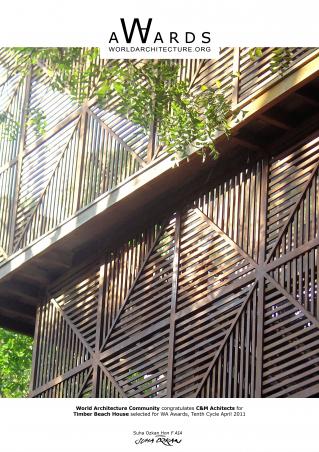
Downloaded 230 times.
Favorited 1 times
